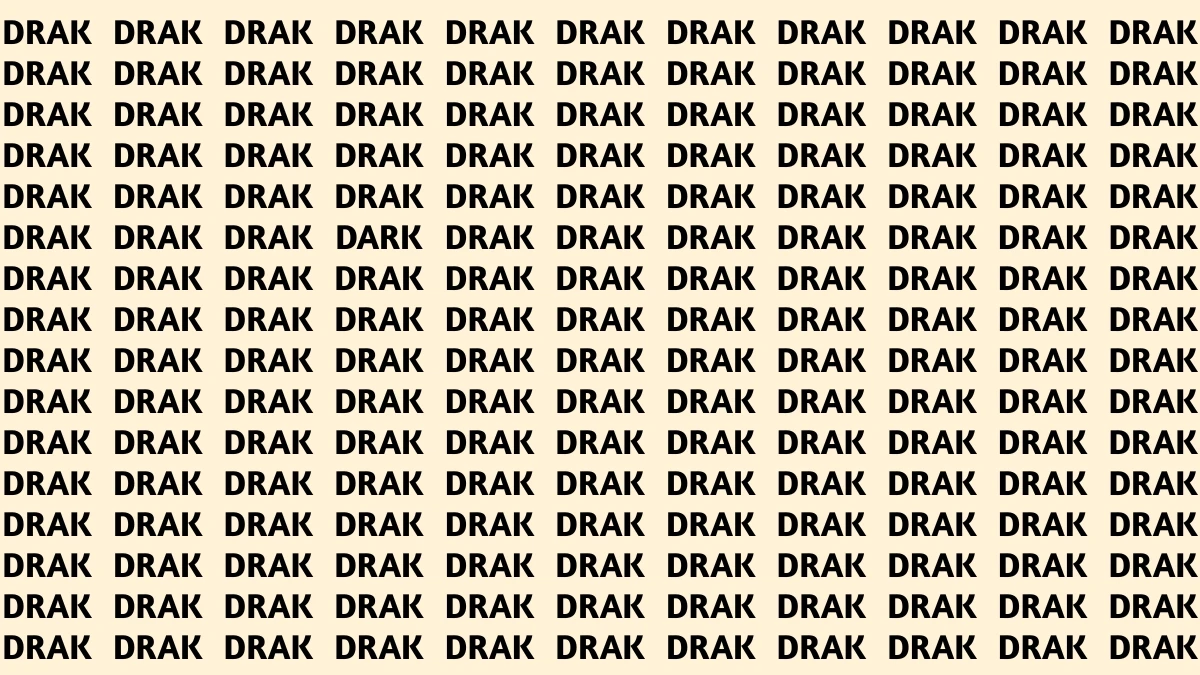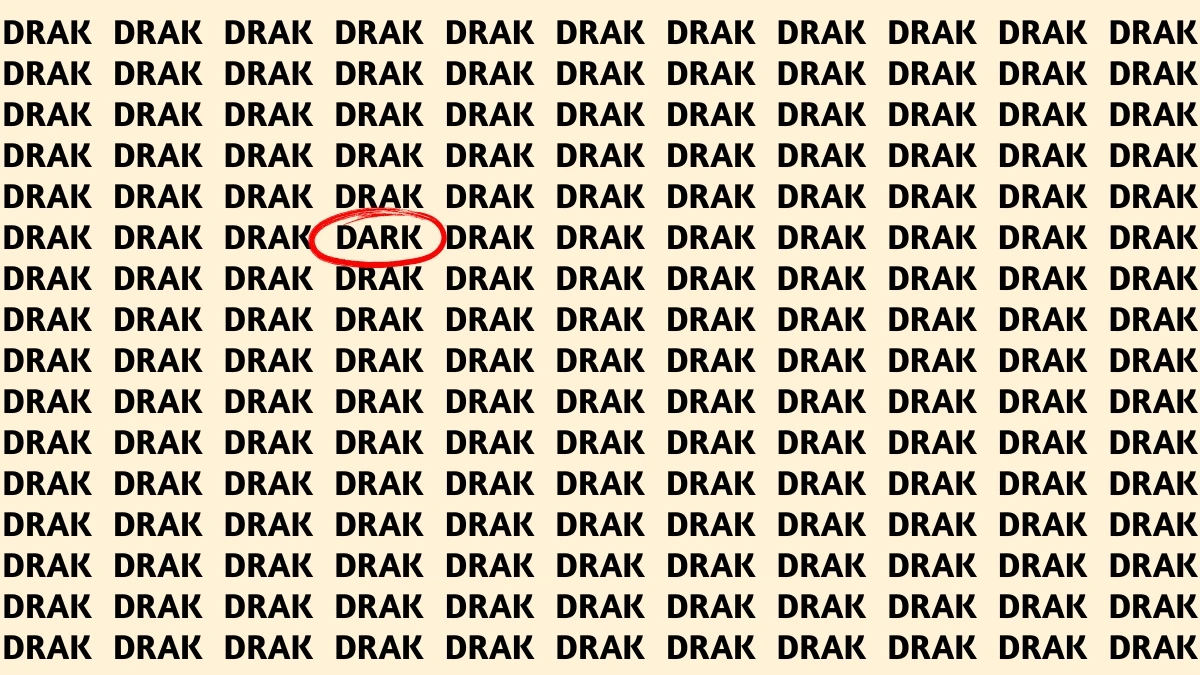Optical Illusion
An optical illusion occurs when our brain interprets visual information in a way that doesn’t match reality, causing us to see something that isn't physically there or perceive objects differently than they actually are.
These illusions exploit how we process light, color, contrast, and motion, tricking our brain with cues that alter our perception.
For example, an image may appear to change color, shape, or movement due to the way it’s designed, like the Müller-Lyer illusion where two lines of the same length appear different because of arrowheads at the ends.
Optical illusions not only demonstrate the complexities of visual perception but also serve as a tool in art and design to challenge and engage viewers.
Optical Illusion Visual Test: Within 5 Seconds Spot The Word DARK among DRAKs
In this optical illusion visual test, you are challenged to spot the word "DARK" hidden among the letters "DRAKs" within just 5 seconds.
At first glance, the task may seem simple, but the twist lies in the subtle differences between the letters. The test requires a keen eye and sharp focus, as the letters are designed to mislead or distract your attention.
This type of visual puzzle not only challenges your speed but also enhances your ability to notice minute details and improves your cognitive skills.
It’s a fun way to test how quickly your brain processes visual information and how well you can focus under time pressure. Ready to put your attention to the test? Try it out and see how fast you can spot the word!

Optical Illusion Visual Test: Within 5 Seconds Spot The Word DARK among DRAKs - Solution
In this optical illusion, you're challenged to spot the word "DARK" hidden among many instances of the word "DRAK." At first glance, all the words may seem identical, but there’s a subtle difference in one of them.
The key is the letter arrangement: the word "DARK" replaces the "A" in "DRAK" with an "R," creating a noticeable variation.
This small change might be easy to overlook as the human eye tends to skip over patterns, especially when they’re repeated over and over.
To find the word "DARK," you need to focus and carefully scan the grid. If you look closely, you’ll spot "DARK" in the sixth row, fourth position, standing out from the repeated "DRAK."
The optical illusion works by creating a sense of uniformity, making it harder to notice the single word that doesn’t match the others.






